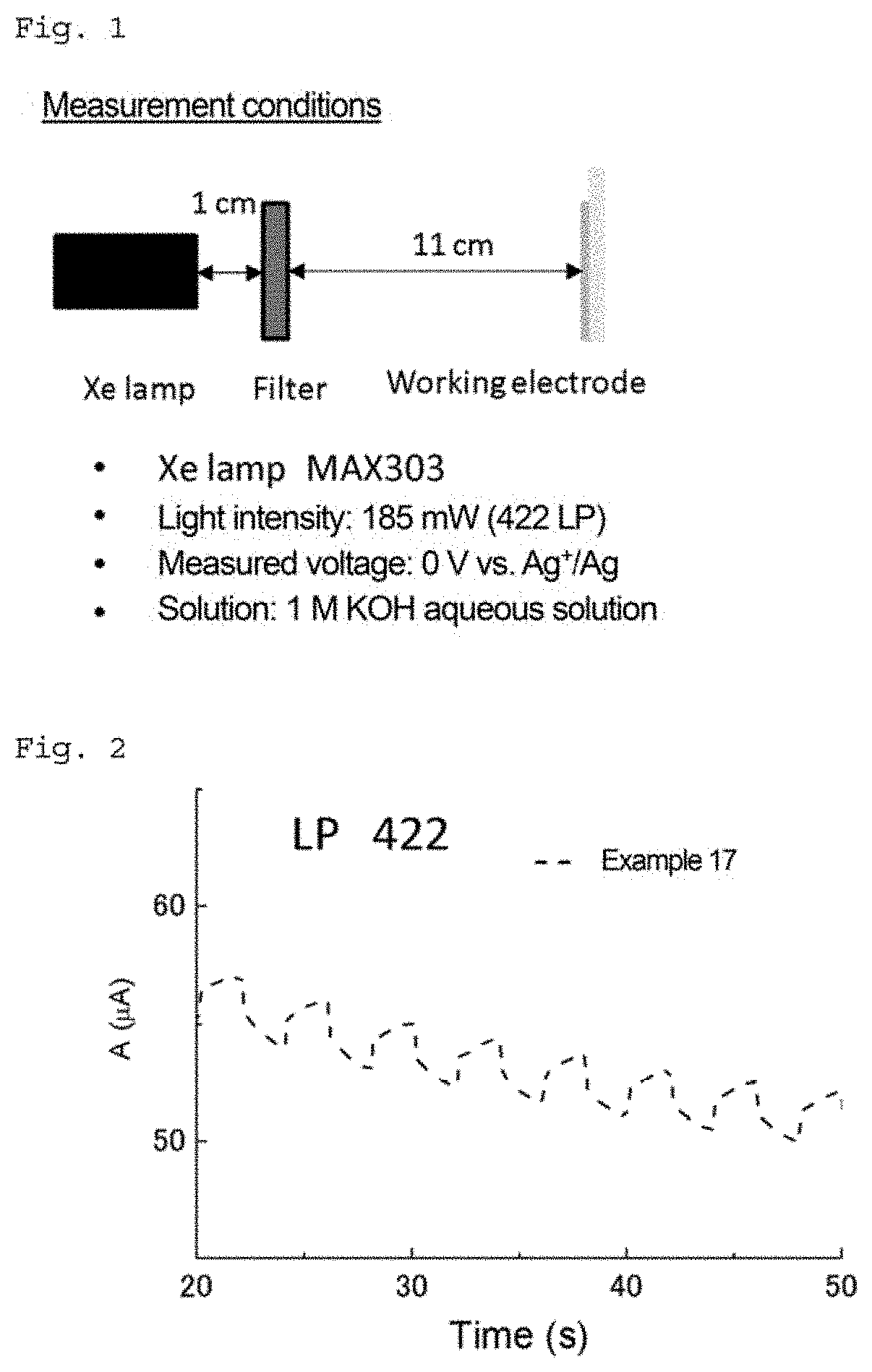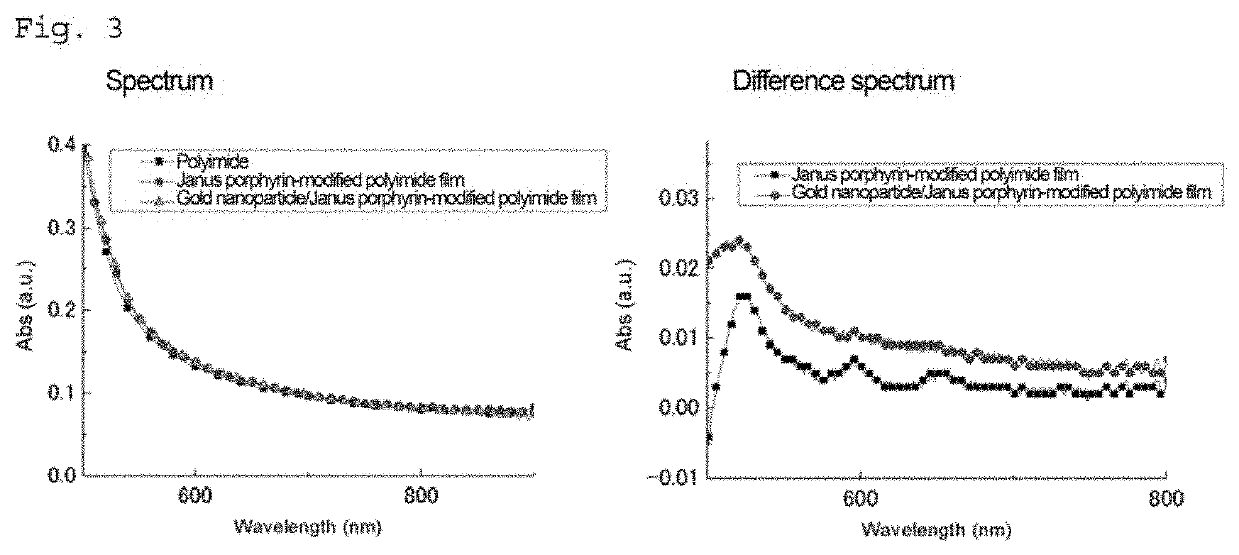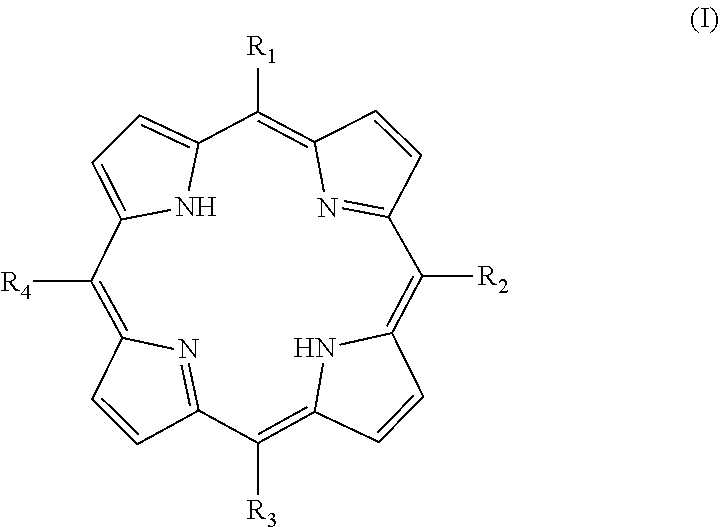Tetraphenylporphyrin derivative
- Summary
- Abstract
- Description
- Claims
- Application Information
AI Technical Summary
Benefits of technology
Problems solved by technology
Method used
Image
Examples
example 1
[0050]200 μmol of compound (d) and 2-(3-(((methoxymethyl)thio)methyl)phenyl)-4,4,5,5-tetramethyl-1,3,2-dioxaborolane (1 mmol) as a phenylboronic acid ether derivative were dissolved in a mixed solvent (25 mL) of 1,2-dimethoxyethane and water (1.5:1). Nitrogen was purged to completely remove oxygen in the solution. Then, while flowing nitrogen, [1,1-bis(diphenylphosphino)-ferrocene]palladium dichloride (20 μmol) and K2CO3 (1 mmol) were added, and the temperature of the solution was raised to 50° C. and then maintained for 4 hours. Dichloromethane was added to the obtained solution, and washed 3 times with 100 mL of water. The dichloromethane solution was removed by evaporation, and the residue was purified by silica gel column chromatography to obtain a compound of the following formula 1 (yield: 60%, MS (MALDI): m / z: 1340 [M]).
example 2
[0051]The compound represented by the above formula 1 was dissolved in a mixed solvent of dichloromethane and ethanol (2:1), and 10 equivalents of AgNO3 was added. After stirring overnight, the precipitated yellow powder was filtered and washed 3 times with 100 mL of dichloromethane. The powder was then added to 6 N HCl (20 mL), and chloroform (20 mL) was added. After stirring for 4 hours, the chloroform solution was collected and washed with water. Then, the solvent was removed by an evaporator, followed by purification, thereby obtaining a compound of the following formula 2. (Yield: 25%, MS (MALDI): m / z: 1164 [M]+)
example 3
[0052]The compound represented by the above formula 2 was dissolved in a dichloromethane solution, and 6 equivalents of acetyl chloride was added, followed by stirring for 2 hours. The solvent was removed by an evaporator, followed by purification, thereby obtaining a compound represented by the following formula 3. (Yield: 96%, MS (MALDI): m / z: 1332 [M]+)
PUM
 Login to View More
Login to View More Abstract
Description
Claims
Application Information
 Login to View More
Login to View More - R&D Engineer
- R&D Manager
- IP Professional
- Industry Leading Data Capabilities
- Powerful AI technology
- Patent DNA Extraction
Browse by: Latest US Patents, China's latest patents, Technical Efficacy Thesaurus, Application Domain, Technology Topic, Popular Technical Reports.
© 2024 PatSnap. All rights reserved.Legal|Privacy policy|Modern Slavery Act Transparency Statement|Sitemap|About US| Contact US: help@patsnap.com










